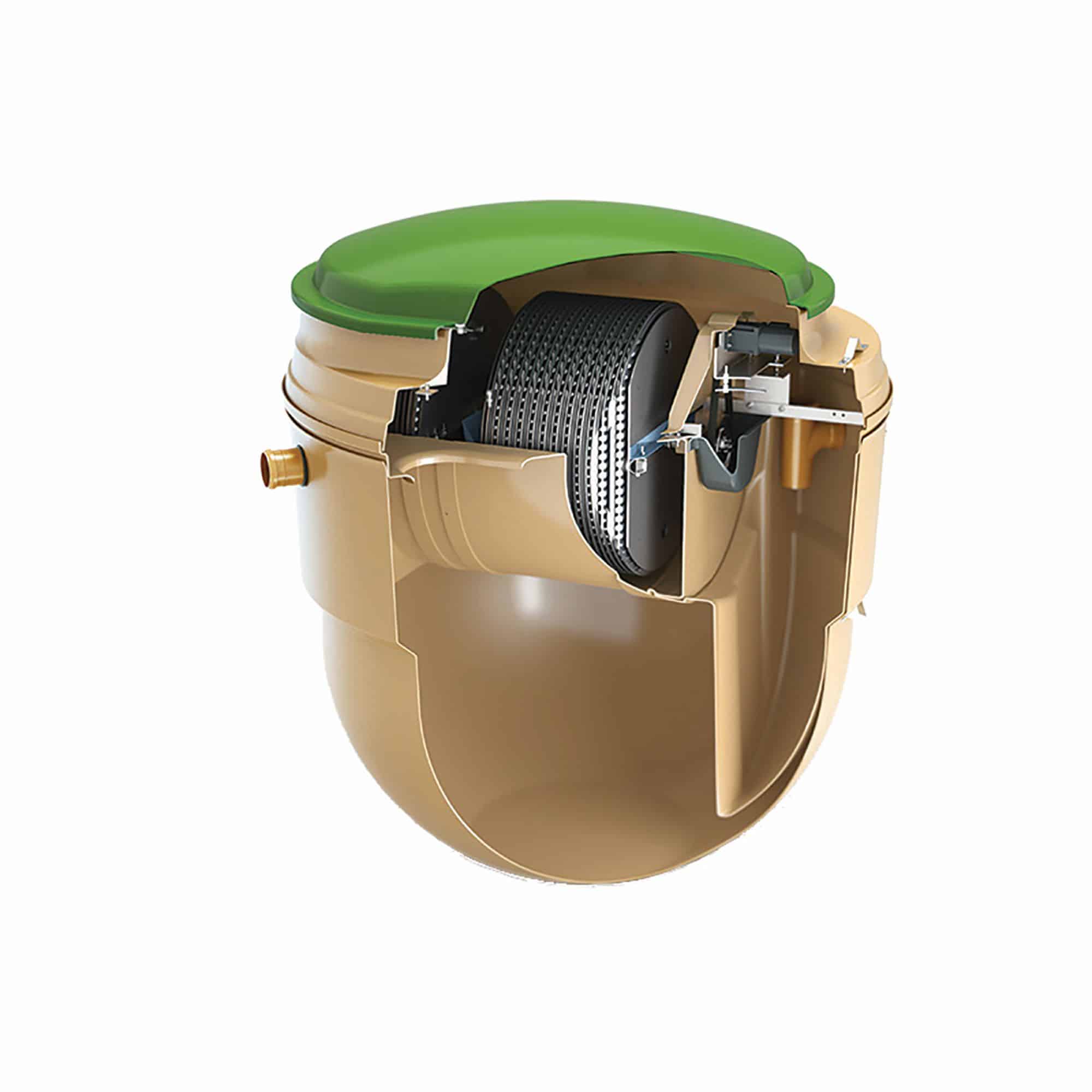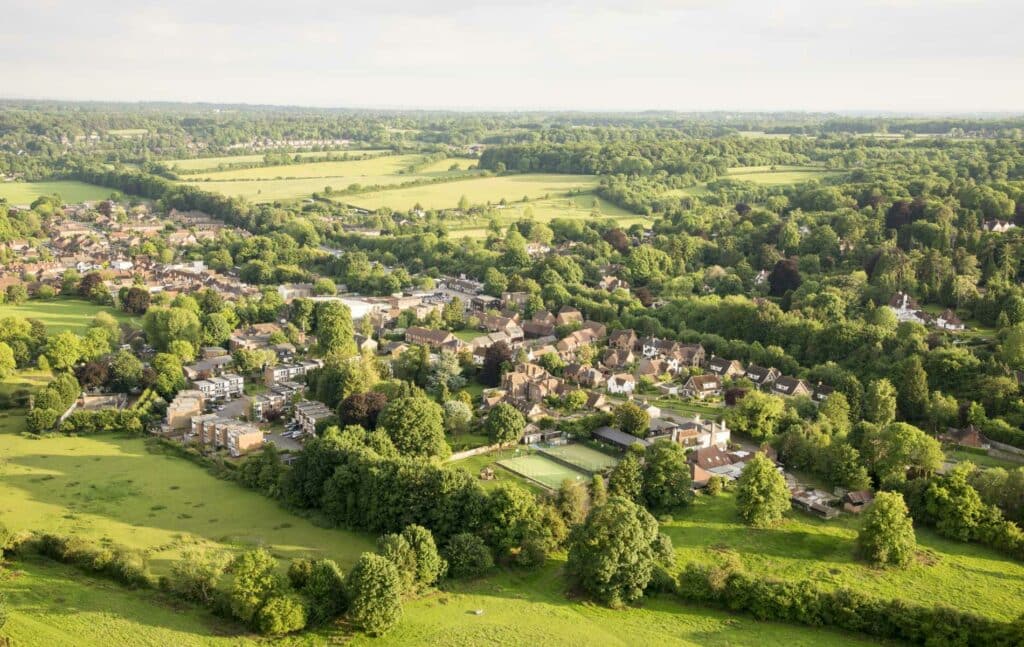An advice and opinion column brought to you by Kingspan Klargester.
“In the 1980s, 500 of Irish rivers were described as having pristine water quality conditions. Today the number is 20,” commented Minister for Environment, Climate, Communications and Transport, Eamon Ryan while speaking on Newstalk’s Breakfast Business show in November 2020.
The Environmental Protection Agency has also said it is not optimistic about the future of water quality in Ireland.
It’s been widely recognised that we all need to work harder, more collaboratively, to improve our water quality and as part of this, to reduce the impact of wastewater discharges, on our water.
For domestic homeowners, including self-builders, who require off-mains drainage, choosing an effective sewage drainage system is important for a number of reasons including protecting homeowners and their land, protecting our watercourses and water supply, while protecting surrounding natural habitat.
Advances in sewage treatment now offer homeowners choice when it comes to wastewater drainage solutions. Homeowners are responsible for drainage within the boundaries of their properties and are legally responsible for minimising the impact of their sewage waste.
Therefore, whether building a new home, refurbishing a property or buying an off-mains home, it’s important to understand the differences in wastewater drainage solutions and compliance with relevant legislation.
What’s the difference between a septic tank and a wastewater treatment tank?
The clue is in the name. A wastewater treatment tank effectively treats waste, whereas a septic tank simply separates it. All wastewater contains pollutants such as phosphates and nitrates and it’s homeowners’ responsibility to ensure that these harmful pollutants are removed from wastewater before reaching waterways.
A wastewater sewage treatment tank treats the effluent to local European regulations, whereas a septic tank filters the solids, leaving the treatment process to happen in the soakaway, meaning you don’t quite know whether the septic tank is working correctly. Ultimately a wastewater treatment tank is safer for the environment minimising the risk of pollution.
As stated, much of the treatment using a septic tank solution is done in the drainage field, however, problems can arise when the ground conditions are unsuitable. This can lead to pollution, potential fines and the strong stench that’s often associated with septic tanks.
Wastewater systems can be mistakenly thought to be more costly than traditional septic tank solutions however often there’s negligible differences. The cost of a sewage draining system for off-mains dwellings is dictated by a number of variables including the ground conditions, the equipment installed, size of the drainage field and site access.
Specific benefits of systems such as Klargester’s wastewater treatment tanks include the monitoring of performance, longevity of a drainage field, reduced risk of pollution to water tables and watercourses, and Klargester’s 7-year warranty on its BioDisc range giving you more confidence in what lies beneath your garden or home.
Is there legislation that homeowners need to be aware of?
In the Republic of Ireland, the Environment Protection Agency’s 1999 Code of Practice states that it’s the homeowner’s responsibility to ensure the proper installation and maintenance of small sewage treatment tanks, and that they do not cause pollution or other harm to the surrounding environment. Compliance is monitored and significant fines are in place for those who do not comply.
From 2015, wastewater treatment systems’ guidance, SR:66, was revised to become a legal requirement. It stated that all wastewater treatment systems, of up to 50 people equivalent, installed must be certified to both EN 12566-3 and SR66:2015 standards.
In Northern Ireland, new builds must apply for a ‘consent to discharge waste’. This is granted by Department of Agriculture, Environment and Rural Affairs (DAERA), subject to the recommendations made by the relevant local council’s Environmental Health (Rivers) Officer.
From November 2020, the application process for domestic consent to discharge is now available online at www.dardni.gov.uk/dca
It’s vitally important for homeowners to future proof their homes and environment by investing in quality and reliable wastewater treatment tanks that adhere to these standards.
Kingspan Klargester’s 70-year manufacturing history delivers a trusted and effective product range of wastewater solutions that are certified to the highest of standards and come with a 7-year warranty (Klargester BioDisc models).
Who should I go to if I want to get a wastewater system installed?
Expert advice at the planning stages of a home build is strongly recommended and an architect can often advise on the options available. Poorly managed sewage waste is a health hazard and can also cause serious harm to our water and natural environment.
Homeowners need to consider how to safely dispose of wastewater if their home is off-mains and it is not practical to connect to the sewer. Advice on the type of treatment process and products that are suited to a specific location is required.
Factors such as the drainage properties of the soil, the likelihood of flooding, the height of the water table etc. must be considered, and in most cases, a sewage treatment plant (STP) is preferable to a septic tank because sewage treatment plants treat effluent for an almost clear overflow, removing all doubts about the possibility of local pollution.
In a nutshell
In summary, every building site or property is different, so should be considered on its merits when choosing a sewage treatment solution, however wastewater treatment tanks are much more efficient (95%) at treating pollutants when compared to a septic tank and are the smart choice when prioritising compliance, safety and the environment.
Contact the experts in wastewater management at Kingspan Klargester:
Tel: 0818 543 540 | Email: klargesterinfo@kingspan.com











